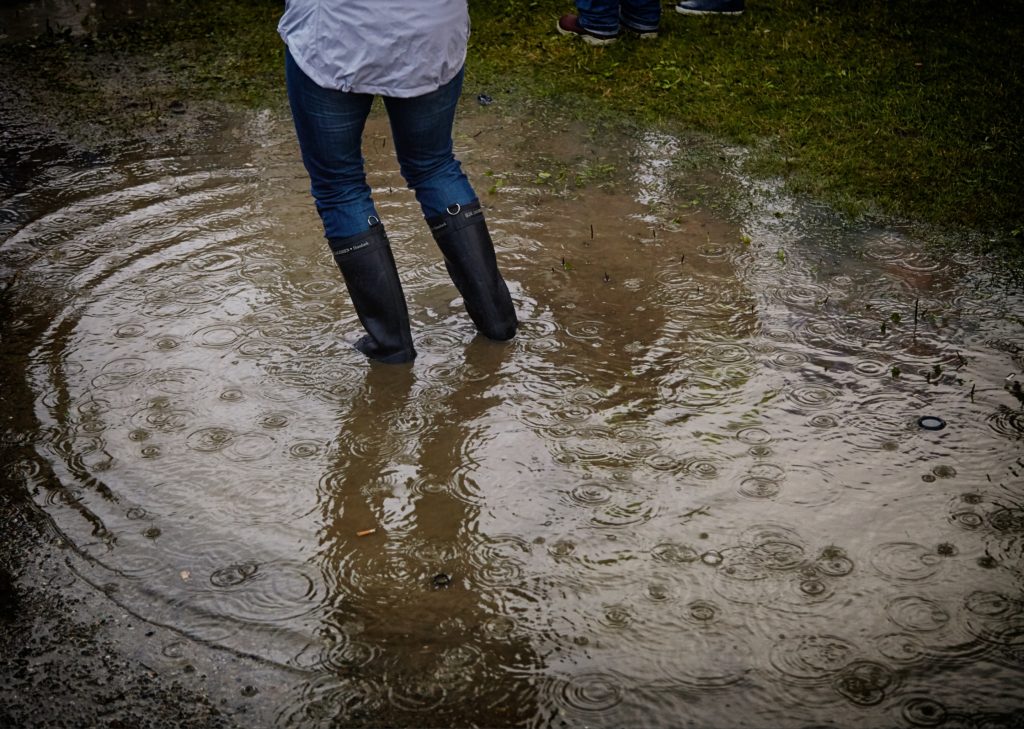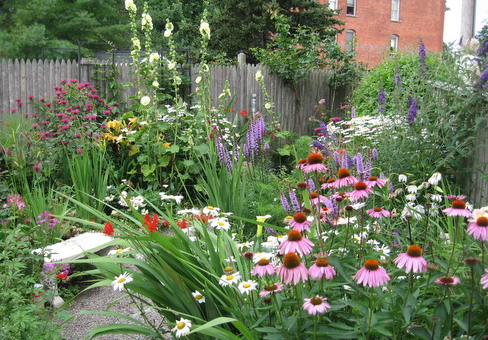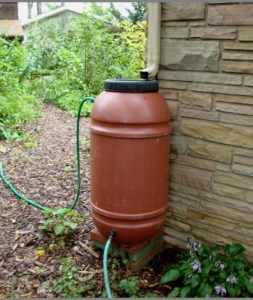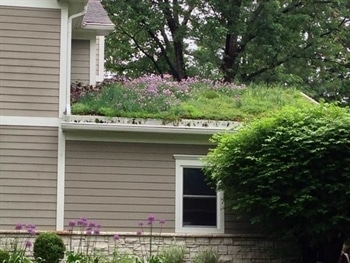Tips/Articles,
April showers bring….seasonal flooding
Apr 02 2020

As many a homeowner knows, flooding is a major issue in the midwest. Not only does it impact our homes it also contributes to polluting local streams, rivers, and lakes. Did you know that there are steps you can take to reduce flooding where you live?

Avoid Water-Intensive Chores During Storms
This is the simplest thing you can do to reduce flooding. Avoid running the dishwasher, bathing, and doing laundry during heavy rainstorms and in the hours following (how long depends on the amount of rain that fell). By avoiding water-intensive activities during heavy rain storms, you reduce the amount of water getting sent out into the environment.
Why? The reality is, sewer systems leak. So if we can reduce how much water is running through our sewer pipes, we reduce the total amount of water (rain + sewer leaks) that needs to be absorbed by the ground. Ultimately, when the ground is able to absorb more rain water, there is less flooding.
Some (Permeable) Ground Rules
We can also reduce flooding by helping the ground absorb more rainwater. When a surface is able to absorb water – like a sponge – that surface is considered permeable. Some surfaces are not at all permeable such as concrete driveways and asphalt parking lots. Some surfaces are extremely permeable such as a natural prairie – which is able to absorb a lot of rainwater. Some are in-between such as lawns and garden beds – they can absorb some water but they have the potential to absorb a lot more.
Grow Native
Some plants absorb a lot more rainwater than others due to their deep and prolific roots. Your typical turf grass lawn only has roots a few inches deep and won’t absorb much. But the native plants in a prairie or woodland have roots as deep as 14 feet which allow the ground to absorb a lot of water.
So, what can you do? Plant more trees or native plants in your yard. You’re probably already familiar with natives such as Purple Coneflowers or Black-Eyed Susans but there’s a wide world of native plants to choose from to fit your style and growing conditions.

If you have a wet spot, you can plant a rain garden, which uses native plants that love wet soil along with contours in the ground (natural or man-made) to help divert and collect rainwater from the surrounding lawn or pavement.

In some cases, you may be able to convert some or all of your lawn to native plants. There are even natural lawn alternatives with a similar look and feel of turf grass but with the added benefit of absorbing more rainwater.
Shrinking Driveways & Permeable Patios
Some municipalities have encouraged property owners to reduce the amount of impermeable area on their property with incentives or ordinances. One obvious feature to tackle is pavement, such as driveways and parking lots. To do this, perhaps you reduce the size of a parking lot, patio, or driveway. Another option is to use permeable paving in place of concrete or asphalt. If you’re thinking of re-doing your driveway, patio or walkways, consider permeable paving options. There’s even permeable concrete and asphalt.
Your roof! Your roof! Your roof sheds rainwater!

Your roof is also another surface that doesn’t absorb any rainwater. During a storm, rainwater hits it and flows to your gutters and down to the ground. Instead of sending all that water directly to your soaked yard, you could install rain barrels on your downspouts to collect the rain. When the storm is over, that water can be used for your lawn or garden or you can simply empty the barrel once your yard has had a chance to dry out. Rain barrels are a low-cost and simple DIY project.
If you’re interested in going big, consider converting to a green roof. A green roof is essentially a shallow garden all across your roof. It is quite attractive (if you’re a fan of the natural look) and even helps insulate your home. They require little to no maintenance but do take a significant up-front investment.

There are lots of options to reduce the negative impact of April showers on your home, community, and our waterways. Take steps today so you can enjoy those May flowers – instead of re-carpeting your basement (again).
